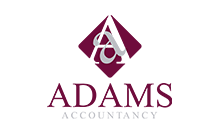Accounting for beginners: A simple guide for business owners

It doesn’t matter what your business does, you need a firm grip on your company finances. It’s much harder to be successful in business if you don’t know how much profit you’re making, how you’re spending your cash or when you might find it difficult to meet all your commitments. In this guide, we’ll cover basic accounting for beginners, including:
- What are debits and credits?
- What are assets, liabilities, owner’s equity, revenue, and expenses?
- How to record accounting entries
- How to create financial statements
- Tips for making accounting easier for small business owners.
Debits and credits
Debits and credits are simply the entries on your general accounting ledger. When accounting books were kept by hand, there was a different book for the bank account, for sales, purchases and recording assets and liabilities. These days, most modern businesses record their finances using digital accounting software such as Xero or QuickBooks, so when you create an invoice, the software automatically posts the debits and credits to the correct accounts for you. Alternatively, you might be recording your sales and expenses on a spreadsheet which is a common way to do things for sole traders and businesses that don’t hold lots of stock or assets.
The table below shows the difference between entries on the five areas of your business accounts – assets, liabilities, equity, revenue and expenses.
Debit Credit
1) Asset Accounts Increase Decrease
2) Expense Accounts Increase Decrease
3) Liability Accounts Decrease Increase
4) Equity Accounts Decrease Increase
5) Revenue Accounts Decrease Increase
-
Assets
Assets are the items that your business owns. They can be tangible, such as property, vehicles, equipment, cash or inventory (stock) or intangible, such as goodwill, patents and trademarks.
Accounting for assets
To record the purchase of an asset, you would debit the asset account and credit the cash account. For example, if you buy a new computer for your business, you’ll debit the “Computers” asset account and credit the “Cash” account. If you bought the asset on credit, you’ll credit creditors rather than cash. -
Expenses
As you do business, you incur expenses to generate revenue. Expenses include things like salaries, rent, utilities, admin, sales and marketing costs.
Accounting for expenses
To record an expense, you would debit the expense account and credit the asset account or the liability account. For example, if you pay your employees’ salaries, you’ll debit the “Salaries Expense” account and credit the “Cash” account. -
Liabilities
Liabilities are things that your business owes to others, such as accounts payable (short-term liabilities) and accrued expenses, or long-term, such as loans and mortgages.
Accounting for liabilities
To record a liability, you’ll debit the liability account and credit the cash account. For example, if you borrow £10,000 from a bank, you’ll debit the “Accounts Payable” liability account with £10,000 and credit the “Cash” account with £10,000. -
Owner’s Equity
Owner’s equity is the difference between what you own (your assets) and what you owe (your liabilities). It’s the amount of money that you have invested in your business, plus any profits that you have earned and retained.
Accounting for owner’s equity
To record an increase in owner’s equity, you’ll credit the owner’s equity account and debit the asset account or the liability account. -
Revenue
Revenue is the money that your business earns from selling its products or services. It’s also known as income or turnover.
Accounting for revenue
To record revenue, you’ll debit the “Accounts Receivable” account and credit the “Sales” account. For example, if you sell a product for £100, you’ll debit the “Accounts Receivable” account with £100 and credit the “Sales” account with £100. If you receive cash, then you’ll credit the “Sales” account and debit the “Bank” account.
Creating Financial Statements
Financial statements provide information about your business’s financial health. The most common financial statements are the balance sheet, the income statement, and the cash flow statement.
The balance sheet shows your assets, liabilities, and owner’s equity at a specific point in. The income statement shows your revenue, expenses, and profits over a period, usually a year. The cash flow statement shows your cash inflows and outflows over a period.
Streamlining Your Finances With Accounts Preparation
Once you’ve grasped the fundamentals of accounting, the next step is to ensure your financial records are accurate and compliant. This is where accounts preparation becomes essential. It involves compiling your financial data into structured statements, such as balance sheets and profit and loss accounts, which are crucial for tax filings and business assessments.
Proper accounts preparation not only helps in meeting legal requirements but also provides a clear picture of your business’s financial health. By outsourcing this task to professionals, you can save time, reduce errors, and focus on growing your business with confidence.
Easy accounting for beginners
Here are some ways you can make your small business accounting much easier:
Use a bookkeeping software program. User friendly bookkeeping software programs such as Xero help you track your income, expenses, and other financial information. You’ll save you a lot of time and hassle. You’ll also reduce the risk of costly mistakes.
Reconcile your bank statements regularly. Compare your bank statement to your bookkeeping records to make sure they match. Identifying any discrepancies between your bank statement and your accounting records each month or week means you won’t have a mess on your hands at year end.
Keep good records. This includes receipts, invoices, and other documentation for all your financial transactions. Good records will make it easier to track your income and expenses. Backup may be requested by HMRC or auditors, so make sure you have a robust processes for storing your files.
Use a simple accounting method. There are two main types of accounting methods: cash basis and accrual basis. Cash basis accounting is simpler, but it doesn’t always give you a complete picture of your financial health. Accrual basis accounting is more complex, but it provides a more accurate picture of your finances. If your revenues are above £150,000 per year, you must use accruals basis accounting.
Set up a budget. A budget can help you monitor your income and expenses so you stay on plan financially. You can store your budget in your accounting software and then produce reports to show any actual variances from the budget. Updating your budget periodically is known as forecasting which helps your business manage resources more effectively.
Pay your bills on time. Late payments damage your credit score. If you get a reputation among your suppliers for paying late, it can be more difficult to get credit in the future. You can avoid this issue if you set up automatic payments for your bills whenever possible.
File your taxes on time. HMRC has strict deadlines for filing taxes. If you file or pay your taxes late, you’ll pay penalties and interest.
Stay organised. If you keep your books in good order, you’ll find it easier to keep track of progress in your business. Properly organised accounting means you won’t waste time on unnecessary admin and you’ll have everything at your fingertips to make timely well-considered decisions.
Hire a qualified accountant. If you’re not comfortable with accounting, or if you need help with more complex financial tasks, consider hiring a qualified accountant. An accountant can help you set up your bookkeeping system, reconcile your bank statements, and prepare your taxes.
Get your accounts in order today
Most business owners are excited by their core business – the reason they started in the first place. Many owners are less captivated by managing the finances. However, by understanding the basics of accounting and using the right tools, you can make accounting easier for yourself and your business. If you need help to get your head around the five elements of accounting and how to do your bookkeeping correctly, give the team at Adams Accountancy a call on 01322 250001 for a free chat.

